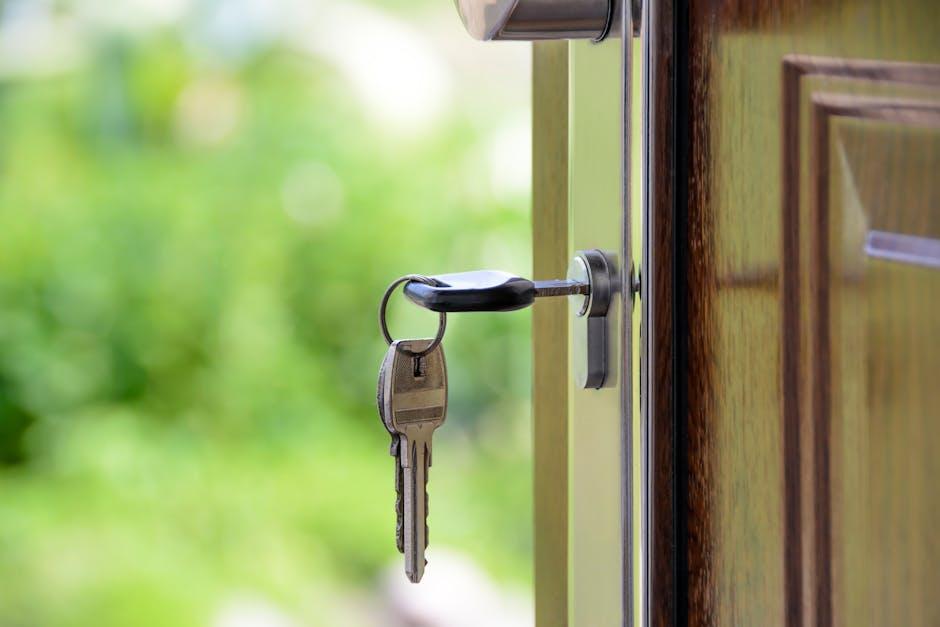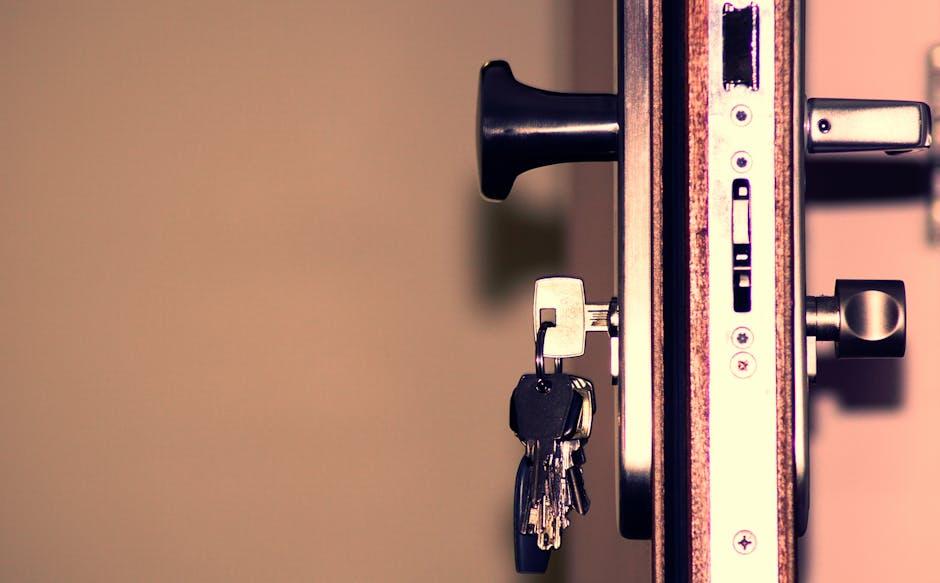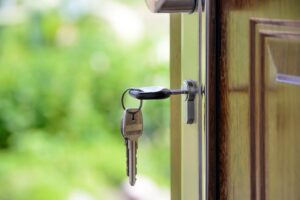In an age where security is paramount, the safety of our homes has never been more important. Yet, despite advances in technology and design, many households remain vulnerable to common security pitfalls. Unlocking the secrets to a truly secure home requires more than just sturdy locks-it calls for expert insight and practical knowledge. In this article, we delve into top residential locksmith tips, offering you tried-and-true strategies from seasoned professionals. Whether you’re fortifying a new property or re-evaluating an old security system, these expert tips will help you unlock a safer, more secure living space.
Table of Contents
- Choosing the Right Locks for Maximum Security
- Essential Maintenance Tips to Keep Your Locks Reliable
- Smart Lock Technologies and How to Use Them Effectively
- Emergency Preparedness Strategies from Locksmith Professionals
- In Conclusion

Choosing the Right Locks for Maximum Security
When it comes to enhancing home security, selecting the ideal lock is a pivotal decision. Not all locks offer the same level of protection, so understanding the options and their benefits helps safeguard your home more effectively. Deadbolts with solid metal construction and a minimum of one-inch throw bolt length provide robust resistance against forced entry. For added technology-driven security, smart locks integrate seamlessly with modern home automation systems, allowing remote control and real-time monitoring. Don’t overlook the quality of the lock’s internal mechanism-pin tumbler locks paired with anti-pick features can significantly mitigate burglary risks.
Consider your home’s unique needs by analyzing entry points and neighborhood crime patterns. In addition, evaluate these lock types for different security demands:
- Single-cylinder deadbolts: Ideal for doors with windows as they use a key on one side only.
- Double-cylinder deadbolts: Require a key from both sides, increasing security but potentially complicating emergency exits.
- Electronic keypad locks: Offer keyless entry and programmable codes for controlling access.
- Smart locks: Enable integration with mobile apps for remote locking and activity tracking.
| Lock Type | Security Level | Best Use |
|---|---|---|
| Deadbolt | High | Main exterior doors |
| Smart Lock | Medium-High | Side doors or main doors with tech integration |
| Keypad Lock | Medium | Garage doors & secondary entries |
| Mortise Lock | High | Commercial style doors & historic homes |

Essential Maintenance Tips to Keep Your Locks Reliable
Locks are your home’s first line of defense, and their reliability hinges greatly on proper maintenance. Regular inspections can identify issues before they escalate-look out for stiffness in turning, visible rust, or misalignment in lock components. Simple habits like lubricating with graphite powder instead of oil-based products and keeping the lock clean from dust and debris can greatly extend their lifespan. Additionally, check the strike plate and screws periodically; loose fittings can compromise security more than worn keys.
Consider the following quick maintenance checklist to keep your locks in prime condition:
- Clean lock surfaces using a dry microfiber cloth to remove dirt.
- Apply graphite lubricant inside keyholes to ensure smooth turning.
- Test keys for any signs of bending or wear; replace if necessary.
- Tighten screws on hardware to prevent looseness.
- Inspect weather stripping around doors to avoid moisture buildup near locks.
| Maintenance Task | Recommended Frequency |
|---|---|
| Lubricate Locks | Every 6 Months |
| Inspect Keys | Quarterly |
| Tighten Hardware | Annually |
| Clean Lock Surface | Monthly |
Smart Lock Technologies and How to Use Them Effectively
Embracing the latest advancements in smart lock technologies can dramatically enhance your home’s security while offering unparalleled convenience. From keypad entries and biometric scanners to remote smartphone controls, modern smart locks eliminate the hassle of traditional keys and provide real-time alerts about your door’s status. To maximize their effectiveness, always ensure your smart lock is paired with strong, unique passwords and enable two-factor authentication where available. Additionally, regular firmware updates are essential to patch any vulnerabilities and keep your system resilient against cyber threats.
When integrating smart locks into your security setup, consider the practical benefits and limitations of each technology type. Here’s a quick overview to help you make an informed choice:
| Smart Lock Type | Key Features | Best Use Case |
|---|---|---|
| Keypad Lock | PIN codes, no physical keys required | Shared access for family or workers |
| Biometric Lock | Fingerprint or facial recognition | High-security homes and offices |
| Wi-Fi Enabled Lock | Remote access, notifications, and integration with smart home systems | Tech-savvy users seeking convenience |
To truly harness the power of these devices, combine them with complementary strategies such as installing security cameras, setting up automated locking schedules, and training all household members on emergency protocols. Remember, the fusion of smart technology and smart habits is key to cultivating a safe and secure living environment.
Emergency Preparedness Strategies from Locksmith Professionals
When faced with unexpected lockouts or break-in attempts, swift and strategic actions can make all the difference. Expert locksmiths recommend establishing a trusted network of professionals who can respond promptly during emergencies, ensuring your safety and peace of mind. Additionally, investing in smart lock technology provides remote access control capabilities, allowing you to monitor and grant entry even if you’re not physically present. This proactive measure not only enhances security but also reduces reliance on physical keys, often lost or misplaced in critical moments.
Preparing your home for emergencies also involves a combination of hardware and know-how. Locksmith professionals suggest keeping a carefully hidden backup key and familiarizing all family members with its location. They also advise creating a simple emergency kit that includes:
- Non-electronic lock tools (e.g., bump-resistant keys, lock picks for authorized use)
- Contact list of local locksmiths known for 24/7 service
- Written instructions for emergency lock manipulation and alarm system overrides
| Emergency Element | Purpose | Recommended Frequency |
|---|---|---|
| Backup Key Location Check | Ensures key is accessible and secure | Every 6 months |
| Smart Lock Firmware Updates | Maintains security integrity | Quarterly |
| Emergency Contact List Review | Keeps locksmith info current | Annually |
In Conclusion
In a world where peace of mind begins at your doorstep, mastering the art of home security is more important than ever. By embracing these expert locksmith tips, you’re not just locking doors-you’re unlocking a safer, more secure sanctuary for you and your loved ones. Remember, safety isn’t a one-time fix but a continual practice, evolving with new insights and innovations. So take these keys of knowledge, turn them wisely, and let your home stand as a steadfast fortress in an unpredictable world.





